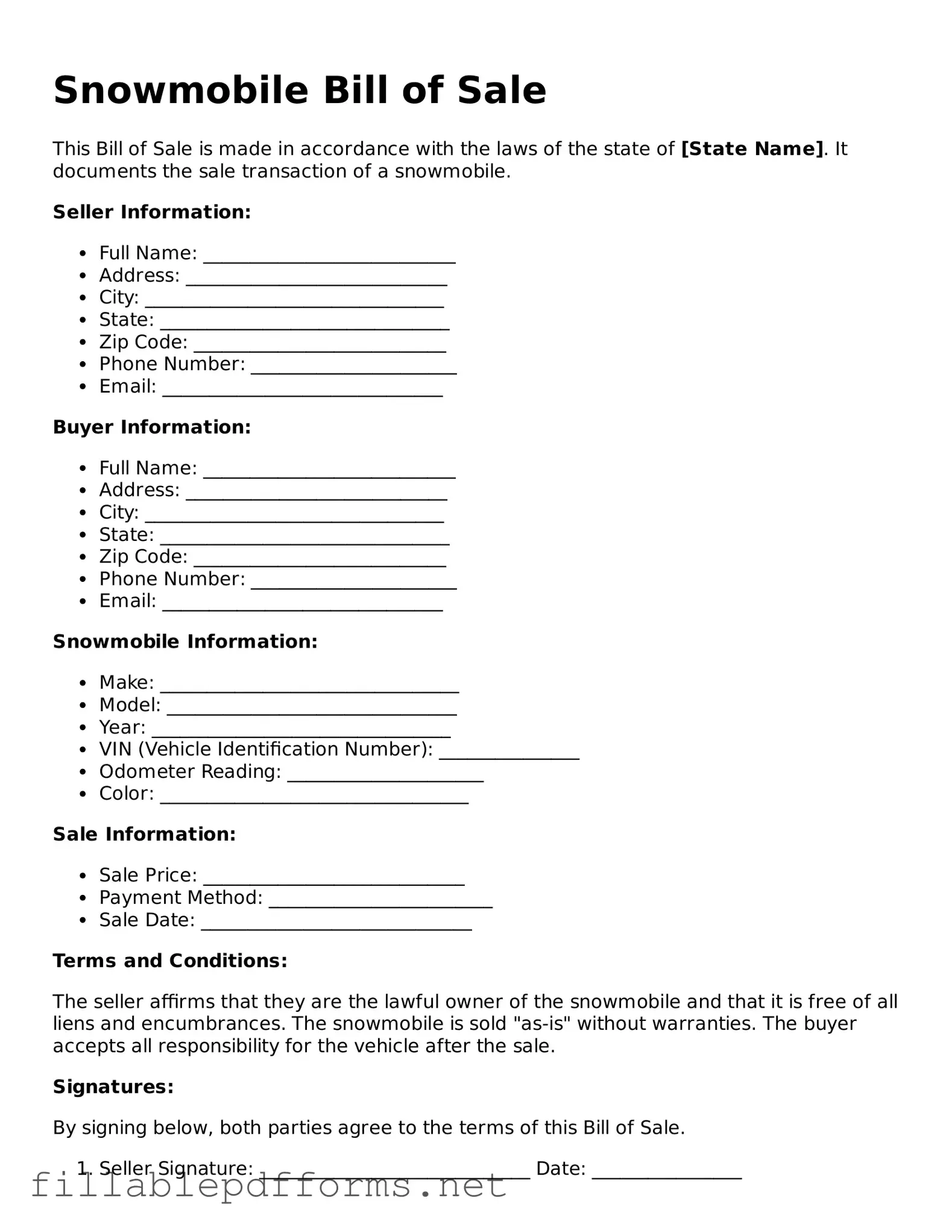Blank Snowmobile Bill of Sale Template
The Snowmobile Bill of Sale form is a crucial document used to record the transfer of ownership of a snowmobile from one party to another. This form not only provides proof of the transaction but also helps protect both the buyer and seller by detailing important information about the snowmobile and the terms of the sale. Understanding how to properly complete this form can ensure a smooth and legally sound transfer process.
Launch Editor Here
